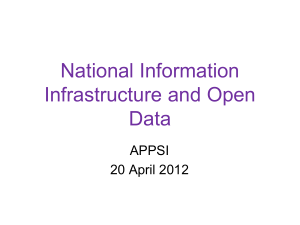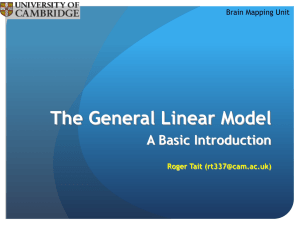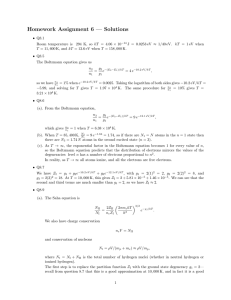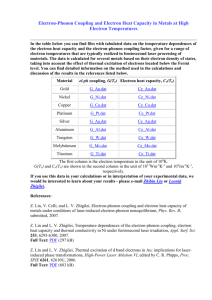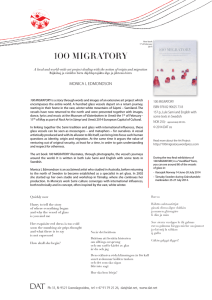FcMRI_technical_ppt
advertisement
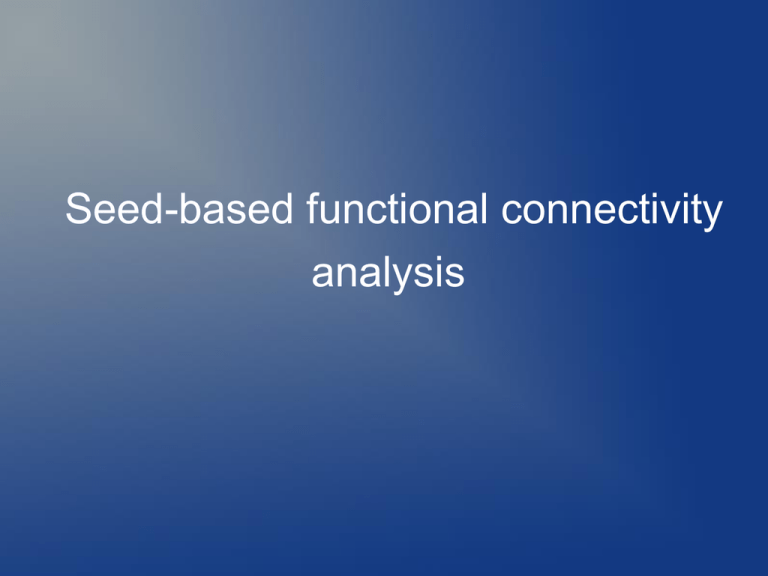
Seed-based functional connectivity analysis Technical Overview Pre-processing First-Level Analysis Higher-Level (Group) Analysis Pre-processing: directory structure Follow standard procedures for unpacking data (unpacksdcmdir command) and running basic recon procedures for all subjects Session does not equal subjectID (i.e. data from one subject may be spread over different sessions) Each subject's functional scans must be in bold subdirectory (fsd) Runs containing raw time-series data must be zero padded (i.e. 003, 005) Add “subjectname” file (the content of the file will be subject name that was passed to recon-all i.e. CVRAM_001_recon) Pre-processing: preproc-sess Preproc-sess command runs the following processing steps by default: Motion Correction Smoothing Brain-mask creation Generates the following additions to FS-FAST hierarchy: f.nii (raw data), fmc.nii (motion-corrected), fmcsm5.nii (motion-corrected & smoothed), fmc.mcdat (text file with MC params (AFNI), brain.mgz (binary brain mask) Sample Usage: preproc-sess -s <subjid> -fwhm <#> -per-run Pre-processing: fcseed-sess Fcseed-sess command computes seeds (regressors) that can be used for functional connectivity analysis or for use as nuisance regressors. Use fcseed-sess to generate time-course information for your chosen seed region (as well as nuisance variable signal) Sample usage: This example will use the FreeSurfer cortical segmentation for the left posterior cingulate (segID: 1010) For seed regions, we recommend generating the mean signal timecourse by using "-mean" : fcseed-sess -segid 1010 -o mean.L_Posteriorcingulate.dat -s <session> -fsd bold -mean Principal component analysis for nuisance regressors: For white matter: ventricles + CSF: fcseed-sess -wm -o wm.dat -s <session> -fsd bold -pca fcseed-sess -vcsf -o vcsf.dat -s <session> -fsd bold -pca Source: http://surfer.nmr.mgh.harvard.edu/fswiki/fcseed-sess For First-level Analysis: mkanalysis-sess mkanalysis-sess sets up an analysis for your functional connectivity data. An analysis is a concept within the FS-Fast processing stream framework. It is a placeholder for all the within-session processing options (motion correction, spatial smoothing, event-type definition, etc). As such, the parameters apply to ALL sessions (i.e. it does not need to be run separately for each session), and does not depend upon the data in any one session. NOTE: This program only configures the analysis; it does not analyze the data Sample Usage: mkanalysis-sess -a <analysis_name> -surface fsaverage <hemi> notask -taskreg mean.L_Posteriorcingulate.dat 1 -nuisreg vcsf.dat 3 -nuisreg wm.dat 3 -nuisreg global.waveform.dat 1 -fwhm 5 -fsd bold -TR <TR> -mcextreg -polyfit 2 -nskip source: http://surfer.nmr.mgh.harvard.edu/fswiki/mkanalysis-sess First-level Analysis: selxavg3-sess Selxavg3-sess computes the average signal intensity maps for each condition for each individual subject. This program separately analyzes the data in each session, then computes the average signal intensity maps for each condition. This average data can be further processed on an individual basis and/or can be used for group analyses. Sample usage: selxavg3-sess -s <subjid> -a <analysis_name> This will create a sub-directory with the same name as your analysis_name under the bold directory in subjects directory. This folder has all of the results for this analysis, including: beta.nii (regression coefficients), rvar.nii (residual error variance), mask.nii (copy of bold/masks/brain.nii), meanfunc.nii (mean functional image), fsnr.nii (functional SNR map), X.mat (design matrix), fwhm.dat ( file with smoothness estimate), and contrast folders. Source: http://surfer.nmr.mgh.harvard.edu/fswiki/selxavg3-sess Group Level Analysis: isxconcat-sess Isxconcat-sess resamples a group of FS-FAST first-level analyses into a common space, either volume- or surface-based, and concatenates all the sessions together into one multi-frame file suitable for use with mri_glmfit. It will go through each session and find the contrast_file in the analysis_name analysis. It will use the register.dat for that session to resample to MNI305/fsaverage space. Sample usage: isxconcat-sess -sf <subject_list.txt> -analysis <analysis_name> -c <contrast_file> -o group-analysis -hemi <lh> or <rh> Group Level Analysis: mri_glmfit The final step is to use mri_glmtfit command to perform general linear model (GLM)analysis in the volume or the surface. Sample usage: mri_glmfit --y <input_file> --fsgd <fsgd_file> --surf fsaverage <hemi> --osgm --glmdir <output_directory> --fwhm <#> --pca

